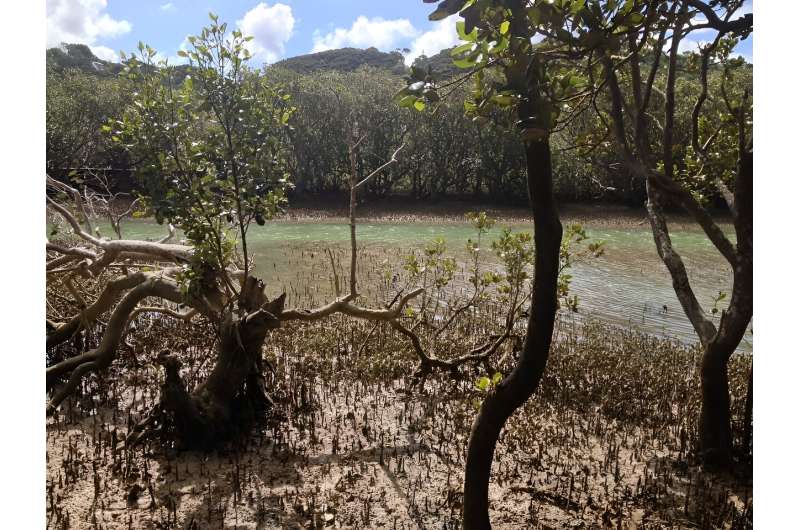This article has been reviewed according to Science X's editorial process and policies. Editors have highlighted the following attributes while ensuring the content's credibility:
fact-checked
peer-reviewed publication
trusted source
proofread
Study shows surprising results around coastal restoration, mangroves and sediment

"Don't blame the mangroves," is a key take-away of an international collaboration looking into vegetation removal, sedimentation, and coastal restoration. The study, published in Nature Communications, shows coastal restoration on a smaller local scale isn't going to cut through the mud without larger scale catchment change.
Contributing author, oceanographer Professor Karin Bryan from the University of Waikato says, "Going into the work we thought we knew what was going to happen, but the modeling showed surprisingly different outcomes—mangroves do not trap and cause sedimentation build up as we'd anticipated."
The researchers used computational models based on New Zealand estuaries to assess sedimentation inputs, and the frictional effects of mangroves on the sedimentation.
Professor Bryan worked within the NIWA Future Coasts Aotearoa program to build evidence of impacts and restoration efforts on local low land coastal ecosystems.
"We know changes in upstream land-use like deforestation have significantly changed downstream coastal and estuarine ecosystems. We wanted to look at how levels of up-stream sedimentation interact with down-stream vegetation like mangroves to assess the efficacy of certain remedial efforts at a local scale," says Professor Bryan.
The results show that coastal mangrove removal initiatives, guided by knowledge on local-scale effects, cannot stop or mitigate mud-infilling of estuaries to restore previous sandy ecosystems.
"The removal of mangroves enhances estuary-scale sediment. This means human interventions like vegetation removal in estuaries can lead to counterintuitive results that actually impede restoration efforts, highlighting that more holistic management approaches are needed," says Professor Bryan.
Again, research points to solutions needing to be found within the larger scale catchments—for example the reduction of sedimentation loss from up-stream land-use practice.
More information: Danghan Xie et al, Mangrove removal exacerbates estuarine infilling through landscape-scale bio-morphodynamic feedbacks, Nature Communications (2023). DOI: 10.1038/s41467-023-42733-1
Journal information: Nature Communications
Provided by University of Waikato




















